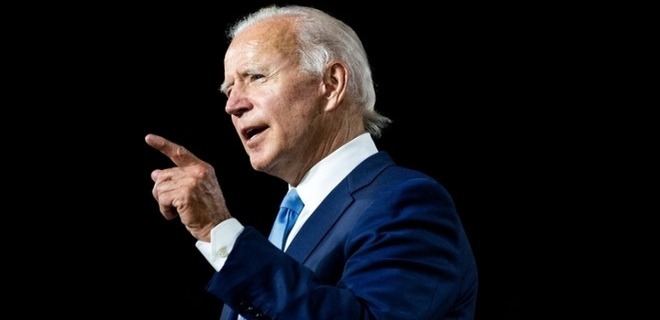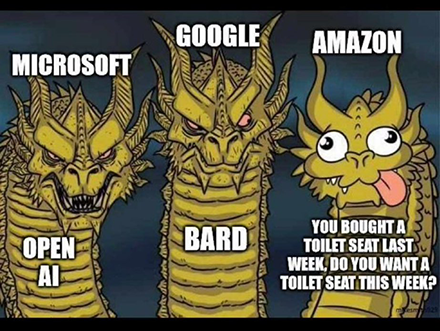 |
||||||||||
|
||||||||||
| Are You Still Watching? Advertisers Aren’t So Sure |
 |
| The News: Buyers suspect that streaming publishers are less than transparent in their reporting, despite promises made last year by GroupM and others. “Buyers remain worried that they’re paying for ads that are running on TVs that have been turned off, an enduring frustration that is caused by technology issues or, some say, a lack of transparency,” writes Catherine Perloff in Adweek. The Background: Last year, GroupM and iSpot made headlines when they reported that as much as 10% of streaming ads played to, well, no one. At issue: viewers who stream TV via a dongle, gaming console or stick can turn their TV screen off, but the streaming company, unaware of the darkened TV screen, continues to stream the content — and send ad calls. For advertisers, that translates to $1 billion spent on advertising to dark screens. Native smartTV apps weren’t affected by this issue at all. To address the challenge, GroupM announced new standards in streaming viewability and CTV measurement. The goal was to “create a streamlined measurement framework and a set of best practices to ensure ads were only counted when the screens were turned on.” Disney, Fox/Tubi, LG Ads Solutions, NBCUniversal, Paramount, VIZIO and Warner Bros. committed to working to address the challenge. Still No Transparency. Here we are, more than a year later, and advertisers tell Adweek that while the issue has improved, they still lack the transparency to ensure real viewers actually see their ads. MediaMonks, which spent the past year and a half studying the problem, told Adweek that the percentage of ads that are delivered to TV screens that have been shut off is now in the low single digits. The improvements, however, are not due to any new standards, but the shifting buying patterns. Agencies now prioritize direct deals with content owners, which eliminates touchpoints — i.e. dongles and sticks — that are a source of the problem. This is why experts have advised holding vendors accountable for accurately handling metadata as it moves from one application to another. Other buyers, who opted to remain anonymous, told Adweek that publishers just want to pad their revenues, and are knowingly counting ads shown to TV screens that are dark. |
| According to Adweek sources, the problem is going away as consumers gravitate towards their smart TVs to stream content. Nearly 77% of all streaming content is viewed that way, and smart TVs are the fastest-growing device segment worldwide. Many users opt into automated content recognition (ACR) data when they set up the TVs, which can record content, including ads, viewed on those TVs, when streamed directly or via an app. That said, while 77% of streamed media is watched on a smart TV, that still leaves 23%, nearly a quarter, consumed on other devices, which is reason enough to give advertisers pause. Until advertisers are assured that their ads are viewable, they will continue to question whether their ads were seen by real humans. This doubt comes at a time when streaming companies are leaning into ad-supported content, making it an urgent issue to address. Analytics will continue to be a key issue in CTV. |
|
| The White House Moves Closer to Actually Regulating AI |
 |
| The News: On October 30, the Biden Administration issued an executive order that establishes new standards and requirements for AI developers, including federal agencies. New Rules: Under the order, developers of AI models that contain tens of billions of parameters must share safety data, training information and reports with the U.S. government prior to releasing them to the public. This order includes updated versions of existing AI solutions, such as ChatGPT and Bard. It also requires the creation of new federal standards and texts to ensure that no AI model threatens national security. These standards will be developed by the National Institute of Standards and Technology, which released a framework for AI Risk Management in January. Other goals include eliminating the risk of AI to help terrorists develop nasty weapons and to protect Americans against AI-enabled fraud and deception. This mandate builds on the voluntary commitments the Biden Administration wrangled over the summer. |
| With the official election season just a few months away, deep fakes and other AI-generated misinformation are a key concern among candidates and publishers alike. In fact, Biden joked about the deep fakes he’s seen of himself at the news conference announcing the order. The order goes further, requiring federal agencies to get involved. For instance, the Commerce Department is tasked with creating “guidance for content authentication and watermarking to clearly label AI-generated content. These watermarks will help citizens know if the communications they receive from the government are authentic. The challenge is whether the level of AI expertise required to develop such standards actually exists within federal agencies. Others say that there is a sizable gap between policy makers’ expectations and technical feasibility — i.e. those watermarks just might not be possible. Still, others worry that the order will further concentrate the power of a few key players and that it lacks any new transparency in terms of model development. |
| The CTV Games Are On! Netflix, Paramount, and Disney Launch New Measurement and Targeting Solutions |
 |
| CTV has become one of the most profitable mediums in the advertising industry, but measurement woes have kept publishers and advertisers tangled in a mess of lack of interoperability. On the other hand, three major players in the CTV game — Netflix, Paramount, and Disney — are launching new ad measurement, targeting, and programmatic tools to advance to the next level. Are these the right game plans? Team Netflix: The streaming giant will offer global advertisers new measurement data for campaign verification through third-party providers. Netflix will also sell marketers new advertising opportunities, such as a unique media package around accessing ad-option binge viewers. Also, in early 2024, advertisers can use their QR codes in their U.S. ad-option creative. Team Paramount: Paramount Advertising introduced Conduit to seamlessly integrate with CTV programmatic platforms, enhancing scalability and interoperability for advertisers. According to Paramount, Conduit is the first global direct integration layer in the programmatic marketplace, and it includes partnerships with Magnite, Google Ad Manager, and all major SSPs, plus key demand solutions from Amazon Publisher Services. Apparent benefits include — ad frequency management, actionable planning, and exposure data. Team Disney: Last week, Disney announced they would make Disney+'s inventory biddable through private marketplaces, and its first-party data graph will be available for ad targeting starting in November. Previously, this was only available through programmatic guaranteed deals. Josh Mattison, SVP of Revenue Management and Operations for Disney Advertising, said, "The subscriber base on ad-supported Disney+ is now big enough to justify investments in better targeting, measurement, and programmatic availability." |
| As mentioned above, the industry knows that there are some measurement kinks to fix in CTV advertising, and these three giants are playing the game to make sure all industry players can progress to the next level. At Advertising Week New York, on a panel called "The CTV Gold Rush," the panelists discussed that despite CTV being a gold mine, the industry must foster transparency, rethink the buying process, and clearly define premium content. The industry is working on it with the moves from these power players. But is it enough? Of course, these three streaming platforms can't fix all of CTV's issues — measurement, attribution, and fragmentation — but they are moving the lever in the right direction. |
| @{optoutfooterhtml}@ |











